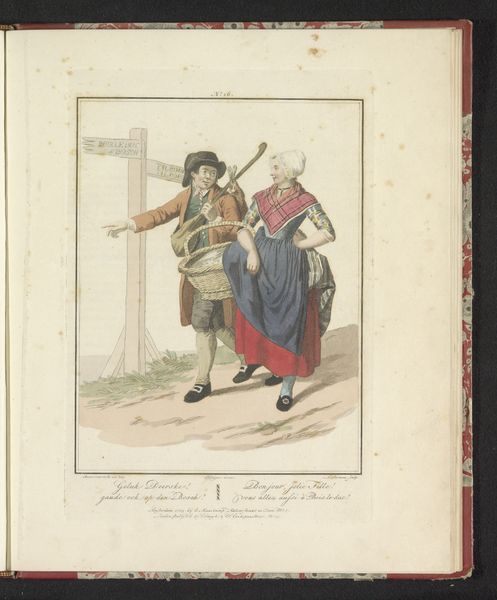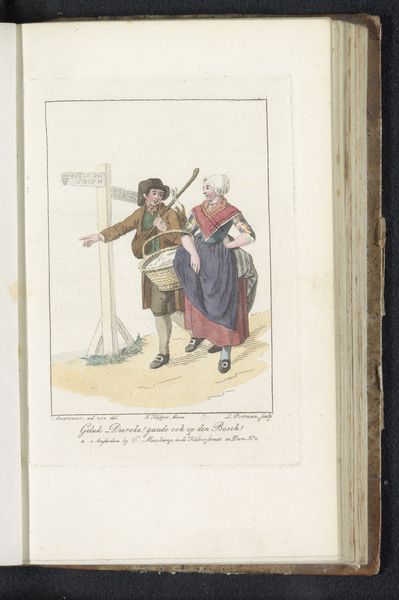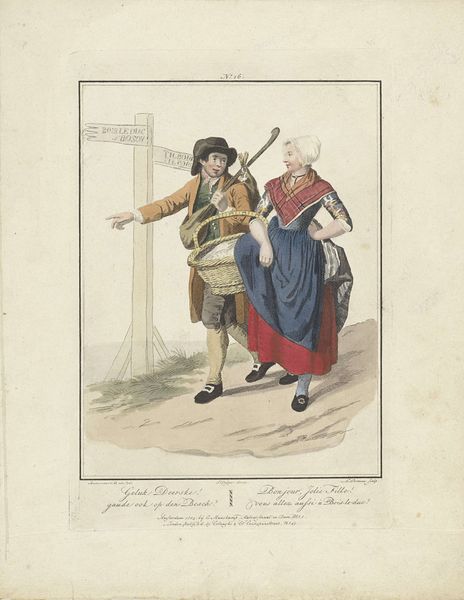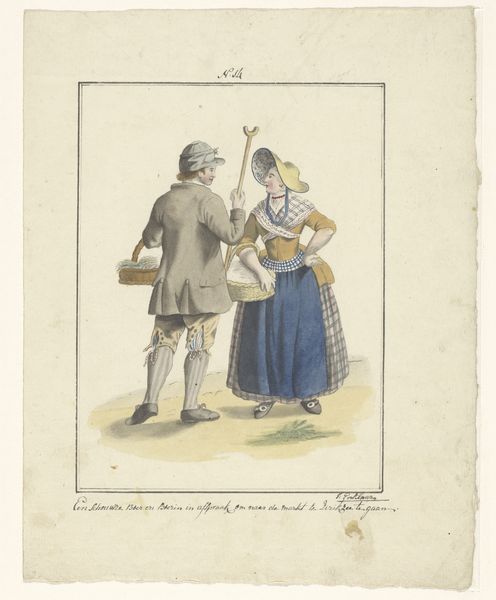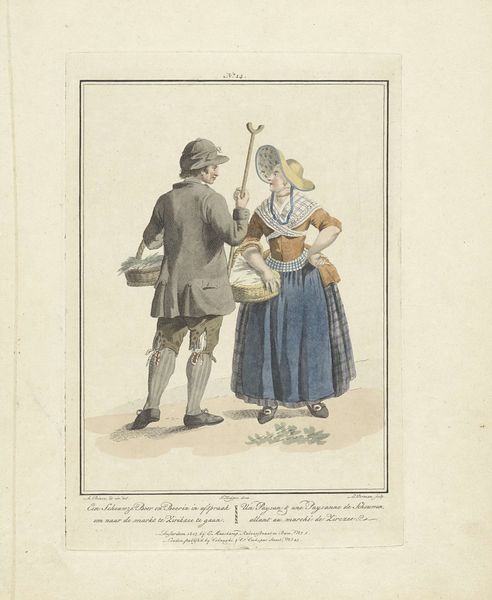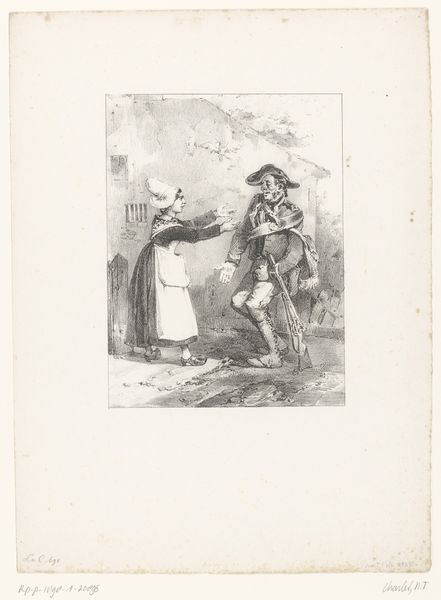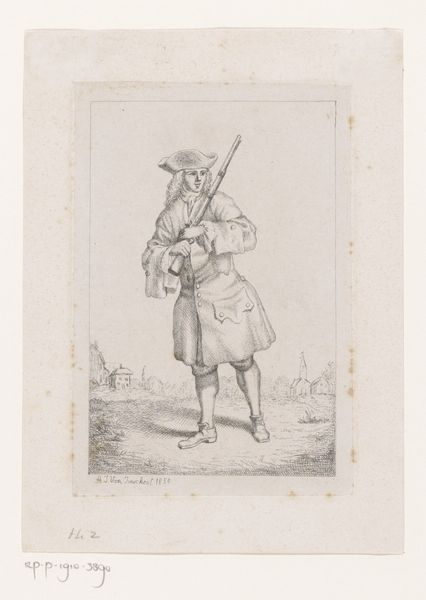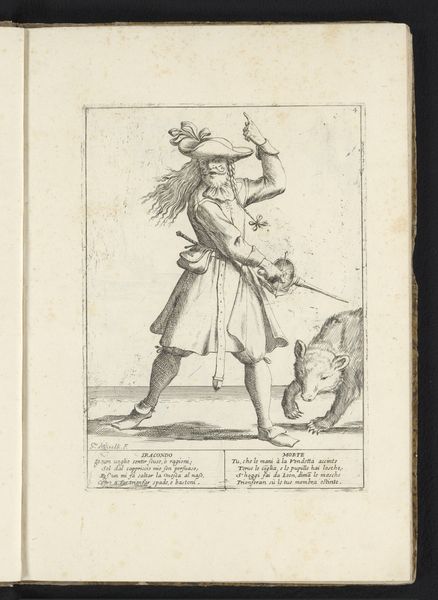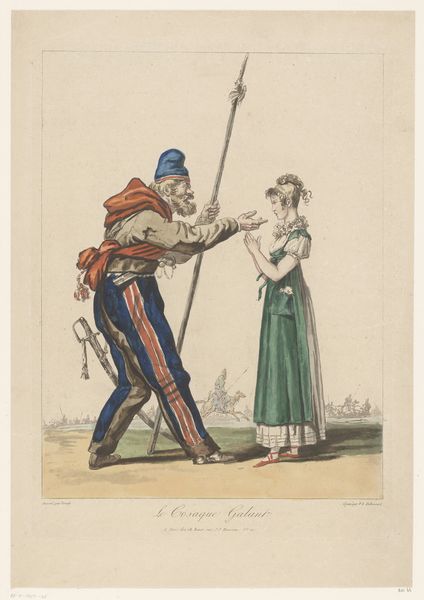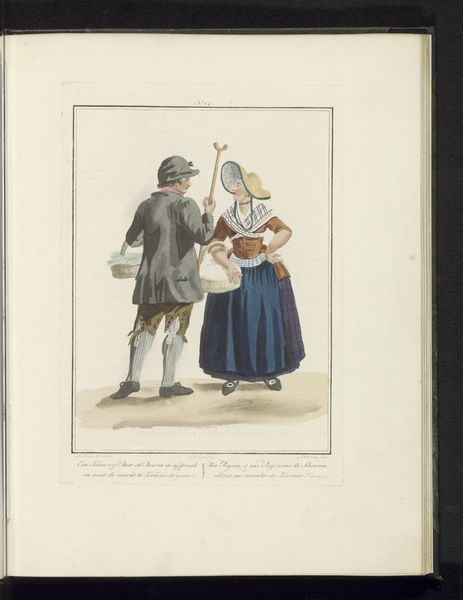
painting, print, watercolor
#
portrait
#
narrative-art
#
painting
# print
#
landscape
#
figuration
#
watercolor
#
romanticism
#
watercolour illustration
#
genre-painting
#
miniature
Dimensions: height 276 mm, width 219 mm
Copyright: Rijks Museum: Open Domain
Curator: Ah, yes, "Boer en boerin uit Cromhout" which translates to "Farmer and Wife from Cromhout," a piece created by J. Enklaar, sometime after 1803. It appears to be a watercolour and possibly also a print, exhibiting elements of Romanticism. Editor: There's such a tender feel to this! A quiet pastoral moment, carefully observed, but not without a wink. The delicate washes of color give it such an ephemeral quality, like a half-remembered dream. Curator: Indeed. Genre paintings such as these became incredibly popular, offering glimpses into idealized rural life. Consider it almost like visual ethnography filtered through the lens of artistic license, documenting customs and social types. You can almost see Enklaar engaging in what we might now call “performing” rural identity. Editor: He points! The farmer indicates their journey with that extended arm and confident gaze! Are we being invited along? And notice the signpost – "Bois-le-Duc" and "Tilbourg" scribed almost playfully. They ground this idealized scene, make it about *somewhere*. It suggests the world outside is calling to them, beyond Cromhout and its routines. Curator: It absolutely taps into a wider Romantic impulse to enshrine the virtue and perceived simplicity of agrarian existence—at a point when the Netherlands were undergoing dramatic shifts thanks to French occupation. How art shaped identity became so critical and you can almost say, that nostalgia became a key ingredient to its national imagination! Editor: Absolutely. Their clothing alone— the woman's neatly pinned bonnet, her shawl, the man’s basket—convey status but also perhaps regional allegiances through symbolic clothing. Yet, it all feels somehow stage-managed. Do they wear the clothing or does the clothing wear them, giving them these constructed meanings? Curator: That performativity reflects the very venues where art was displayed! Exhibitions shifted from private aristocratic spaces to grander public halls, creating a desire for relatable subjects and readily legible social cues that people could ‘read’ in pictures and it all served this sort of community engagement. Editor: Looking again, this print is a whisper, not a shout. An almost deliberately faint imprint in our memory—delicate shades—a fleeting glimpse. It captures a longing for somewhere lost to time. Curator: Precisely, what seems simply illustrative carries echoes of larger anxieties during this turbulent era when national identity was so heavily mediated and negotiated! It provides a glimpse of life on its move again in Netherland history.
Comments
No comments
Be the first to comment and join the conversation on the ultimate creative platform.
